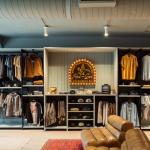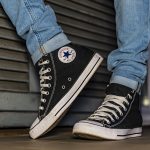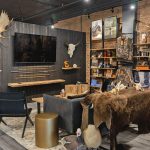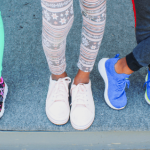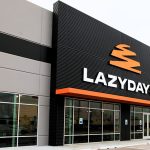Under Armour continues to deliver solid top- and 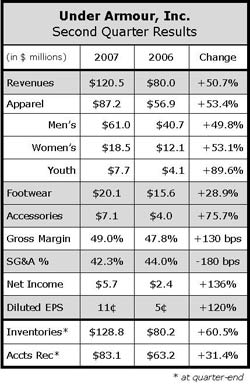 bottom-line results even as the brand reaches what many thought was near maximum penetration of its core full line sporting goods channel. But the brand is also reaching new customers with its core compression product each day, whether it be youth, outdoor, or Europe, and is also ringing up success stories with its loose-fitting product as well. Footwear, which made its debut in the year-ago quarter, grew at a slower pace than the apparel business, a stat that had a few analysts wondering about the potential upside for the business.
bottom-line results even as the brand reaches what many thought was near maximum penetration of its core full line sporting goods channel. But the brand is also reaching new customers with its core compression product each day, whether it be youth, outdoor, or Europe, and is also ringing up success stories with its loose-fitting product as well. Footwear, which made its debut in the year-ago quarter, grew at a slower pace than the apparel business, a stat that had a few analysts wondering about the potential upside for the business.
In a conference call with analysts, the company did confirm that it would launch its first non-cleated product into the market next spring/summer, when it rolls out its cross trainers in hopes of reviving that weak athletic footwear category.
According to retail point-of-sale data compiled by SportScanINFO, the cross training category saw sales fall in the high-single-digits last year after a very rough 2005. Sales in the category are down in the mid-teens for the current year-to-date period versus last year. Whether a challenge or an opportunity remains to be seen, but the companys core full-line sporting goods channel, critical to its launch of the cleated programs, only represents about 20% of XT sales, according to the SSI data. The average selling price for XT product has fallen to about $51 in that channel. Under Armour is expected to come out with its cross training line at the high end, which is generally found in the mall — and dominated by Jordan branded product.
In apparel, the youth and womens business continues to outpace gains in the core mens business and the company pumped even more energy into the womens side this past quarter with the release of its BoomBoom TAP advertising campaign aimed at the female team sports athlete. The kids business continues to draft off of successful programs in mens and womens, but management feels they are capturing even more mindshare with the younger generation, a trend they see as long-term. Just as other generations grew up with adidas and Nike, company Founder and CEO Kevin Plank sees the youth of today gravitating towards their own brands.
“I believe that we are becoming the athletic brand of this generation,” said Plank during the call with analysts. “This kid, the consumer, they are continuing to define themselves and align themselves more and more with the Under Armour brand each and every day.”
Even with the increase in the kids business, which is generally sold at lower prices, Under Armour was able to deliver an 8% increase in average selling prices for the second quarter. Plank pointed to the companys good better best positioning and suggested that consumers were trading up this year to new color-blocked styles that sell for more. The brand is apparently also seeing success with core sports like running, soccer and softball, as well as its team business. Each of these categories grew more than 50% for the period.
The Compression and Training categories continued to drive revenue growth across the apparel business, representing half of the dollar growth in the mens business for the quarter. The HeatGear T-Shirt posted a 38% increase in sales in the first half and the core Micro Short saw sales grow 60% in the period.
The golf category is now the third-largest category in mens, with the core Performance Golf Polo up more than 82% for the year-to-date period.
Concepts shops within key strategic accounts like Dicks Sporting Goods, The Sports Authority and Hibbett are expected to number 125 to 200 by year-end.
The International business was just 2% of sales for the second quarter, but the company sees that increasing to the 3% to 4% range for the year. UA is now boasting over 1,000 doors open in Europe, primarily in the U.K. and Germany. Foreign currency exchange rates positively impacted diluted earnings per share by a penny in the second quarter.
Looking ahead, UA now expects annual net revenues in the range of $580 million to $590 million, an increase of 35% to 37% over 2006, and annual income from operations in the range of $79.0 million to $81.0 million, an increase of 38% to 41% over fiscal 2006.

